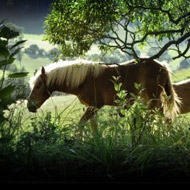
Research highlights common factors after two year study or 389 horses
A two-year-study of colic in horses who had been given general anaesthetic for elective procedures, has found the risk is higher than previously thought.
The study by Colorado State University's College of Veterinary Medicine and Biomedical Sciences, and the Department of Clinical Sciences, looked at the medical records of 389 horses who had undergone 416 instances of general anaesthetic for elective surgery.
Researchers found 8.7 per cent had subsequently suffered from colic (gastrointestinal dysfunction). Previous studies had estimated colic had only occurred in 2.8 to 6 per cent of horses.
It then looked at potential risk factors associated with those that developed colic, with a view to suggesting preventative measures.
It found increasing blood lactate, right lateral recumbency during the anaesthesia, post anaesthetic rectal temperature and the delay in faecal output were all "statistically significant" factors.
The research also found Arabian horses were far more likely to develop colic – nearly a third of these breeds suffered from colic after anaesthesia.
All but one of the horses survived. The one that died developed caecal dysfunction. Exploratory laparotomy was declined by the owner and the horse was euthanised.
"The parameters statistically significant in this study such as breed or horse, faecal output and arterial lactate concentrations are not easily controlled, but they can be used to identify horses at greater risk for gastrointestinal dysfunction," the research team said.
"This can allow the clinician to be proactive about the management of these horses in the post anaesthetic period."
They added further research into temperature control in horses could also prove beneficial.
A difference in the definition of colic, explained the high rate of instances found.
The study, unlike previous research, included horses that required treatment for decreased faecal output. When those horses were omitted, the team found colic in 5.3 per cent of cases, in-line with the previous estimates of 2.8 to 6 per cent.
The research team added that only 13 Arabian horses were included in its sample, four of which developed colic.
They said this small sample may have led to an over estimation of the prevalence of post anaesthesia colic in Arabian breeds.
The study has been published in full in the Equine Veterinary Journal (EVJ) and is available to view in full here.



 BSAVA is to partner with BVA Live (11-12 June 2026) to champion clinical research.
BSAVA is to partner with BVA Live (11-12 June 2026) to champion clinical research.